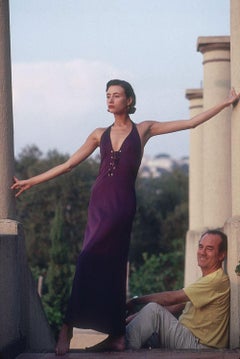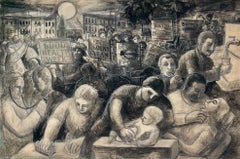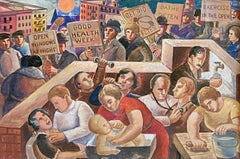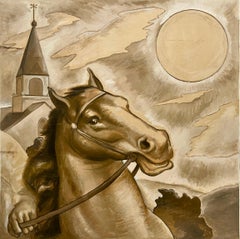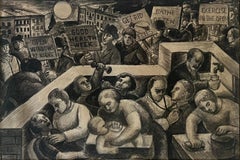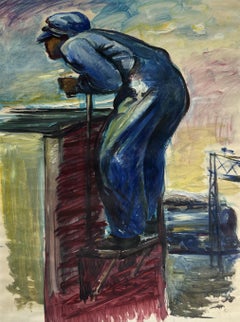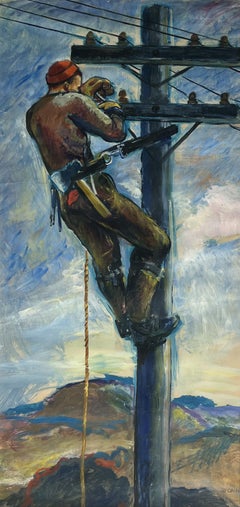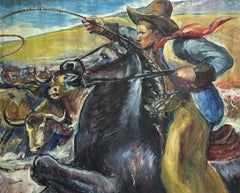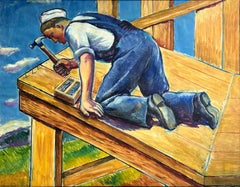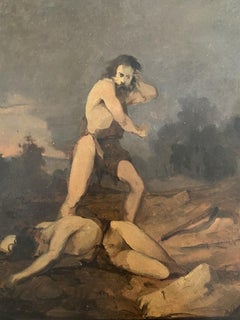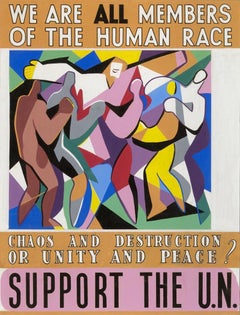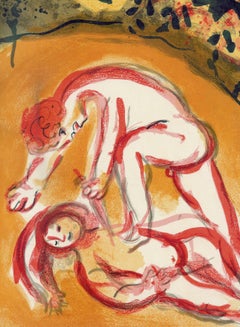Cain Modern Art
21st Century and Contemporary American Modern Decorative Art
Brass, Bronze, Copper, Stainless Steel, Chrome, Nickel
1980s Modern Portrait Photography
Lambda
1930s American Modern Figurative Drawings and Watercolors
Paper, Ink, Gouache
1940s American Realist Figurative Drawings and Watercolors
Paper, Oil
1930s American Realist Animal Drawings and Watercolors
Ink, Gouache, Board
1930s American Realist Figurative Drawings and Watercolors
Paper, Ink
1930s American Realist Figurative Drawings and Watercolors
Paper, Oil
1930s American Realist Figurative Drawings and Watercolors
Paper, Gouache
1930s American Realist Figurative Drawings and Watercolors
Paper, Oil
1930s American Realist Figurative Drawings and Watercolors
Paper, Gouache
Early 20th Century Modern Figurative Paintings
Oil
1940s American Modern Figurative Paintings
Egg Tempera, Board
20th Century American Modern Portrait Photography
C Print, Color, Photographic Paper, Digital
1960s Modern Figurative Prints
Lithograph
Recent Sales
1960s Modern Figurative Prints
Lithograph
1960s Modern Figurative Prints
Lithograph
1940s American Realist Figurative Paintings
Oil, Board
1930s American Realist Figurative Drawings and Watercolors
Paper, Oil
1930s American Realist Figurative Drawings and Watercolors
Paper, Gouache
1930s American Realist Figurative Drawings and Watercolors
Paper, Gouache
1930s American Realist Figurative Drawings and Watercolors
Paper, Gouache
1930s American Realist Figurative Drawings and Watercolors
Paper, Gouache
1930s American Modern Landscape Paintings
Canvas, Oil
1930s American Modern Figurative Paintings
Canvas, Oil
1930s American Modern Figurative Drawings and Watercolors
Paper, Gouache
1930s American Modern Figurative Drawings and Watercolors
Mixed Media
1930s American Realist Figurative Drawings and Watercolors
Paper, Gouache
1920s Modern Landscape Prints
Drypoint, Etching
People Also Browsed
1940s Futurist Abstract Drawings and Watercolors
Gouache, Archival Paper
2010s American Mid-Century Modern Console Tables
Limestone
Antique 15th Century and Earlier African Natural Specimens
Bone
1920s Figurative Prints
Etching
1930s American Modern Landscape Prints
Lithograph
18th Century Old Masters Landscape Paintings
Oil
21st Century and Contemporary English Folk Art Side Tables
Iron
21st Century and Contemporary French Mid-Century Modern Sofas
Stainless Steel
1890s Figurative Paintings
Paper
2010s Canadian Minimalist Console Tables
Aluminum
Antique 18th Century French Rustic Flooring
Limestone
Vintage 1930s American Art Deco Prints
Paper
21st Century and Contemporary Contemporary Nude Sculptures
Marble, Bronze
Vintage 1950s Italian Mid-Century Modern Beds and Bed Frames
Fabric, Wood
Antique 19th Century French Louis XVI Settees
Upholstery, Giltwood
Antique Early 18th Century Portuguese Planters, Cachepots and Jardinières
Terracotta
Cain Modern Art For Sale on 1stDibs
How Much is a Cain Modern Art?
- 1stDibs ExpertSeptember 25, 2019
Modern art is characterized by a rejection of realism and narrative and a trend toward abstraction.
- Who is the father of modern art?1 Answer1stDibs ExpertSeptember 25, 2019
Paul Cézanne is often cited as the father of modern art.
- 1stDibs ExpertApril 26, 2024The difference between modern art and contemporary art comes down to age. Contemporary art refers to art produced by artists who are still alive or were active during the 1960s and later. Modern art is the term for artworks made between 1850 or 1860 and 1960. On 1stDibs, shop a large collection of modern and contemporary art.
- 1stDibs ExpertSeptember 25, 2019
The term contemporary is applied to art by 21st-century artists; modern art refers to works created from the1880s and through the 1960s.
- 1stDibs ExpertMay 3, 2024The father of modern Indian art is generally thought to be Raja Ravi Varma. Active during the late 18th and early 19th centuries, he was the first Indian artist widely known for producing paintings that depicted Indian subjects using the techniques of the European masters. Some of his most famous works include Bhishma on a Bed of Arrows, Bharat Mata, Jatayu Vadham and Lady in the Moonlight. On 1stDibs, shop a variety of Indian art.
- Did Picasso found modern art?1 Answer1stDibs ExpertSeptember 25, 2019
No, Picasso was not a founder of modern art, but he is one of its most famous practitioners.
- 1stDibs ExpertSeptember 25, 2019
Modern art encompasses Postimpressionism, Fauvism, Cubism, futurism, expressionism, Dada, Surrealism, Abstract Expressionism and Pop art.
- Is Art Deco mid-century modern?1 Answer1stDibs ExpertAugust 15, 2019
Art Deco is not mid-century modern. Art Deco began just before World War I and was inspired by cubism. Mid-century modernism first appeared in 1945 and merged a minimalist aesthetic with practicality.
- 1stDibs ExpertNovember 13, 2024Paul Cézanne is called the Father of Modern Art because he served as a bridge between 19th-century Impressionism and early 20th-century Cubism. His work introduced new modes of representation, influencing many avant-garde movements of the early 20th century. Initially inspired by Romanticism and Realism, Cézanne developed a unique pictorial language, altering conventional perspectives and emphasizing the formal qualities of art. Cézanne's distinctive brushstrokes, use of color planes and focus on the underlying structures of objects set his work apart. Despite early ridicule from contemporary critics, artists like Camille Pissarro and gallery owner Ambroise Vollard recognized his talent, with Vollard hosting Cézanne's first solo show in 1895. This exhibition led to wider appreciation, and both Henri Matisse and Pablo Picasso later hailed Cézanne as "the father of us all." On 1stDibs, explore a variety of Paul Cézanne art.

